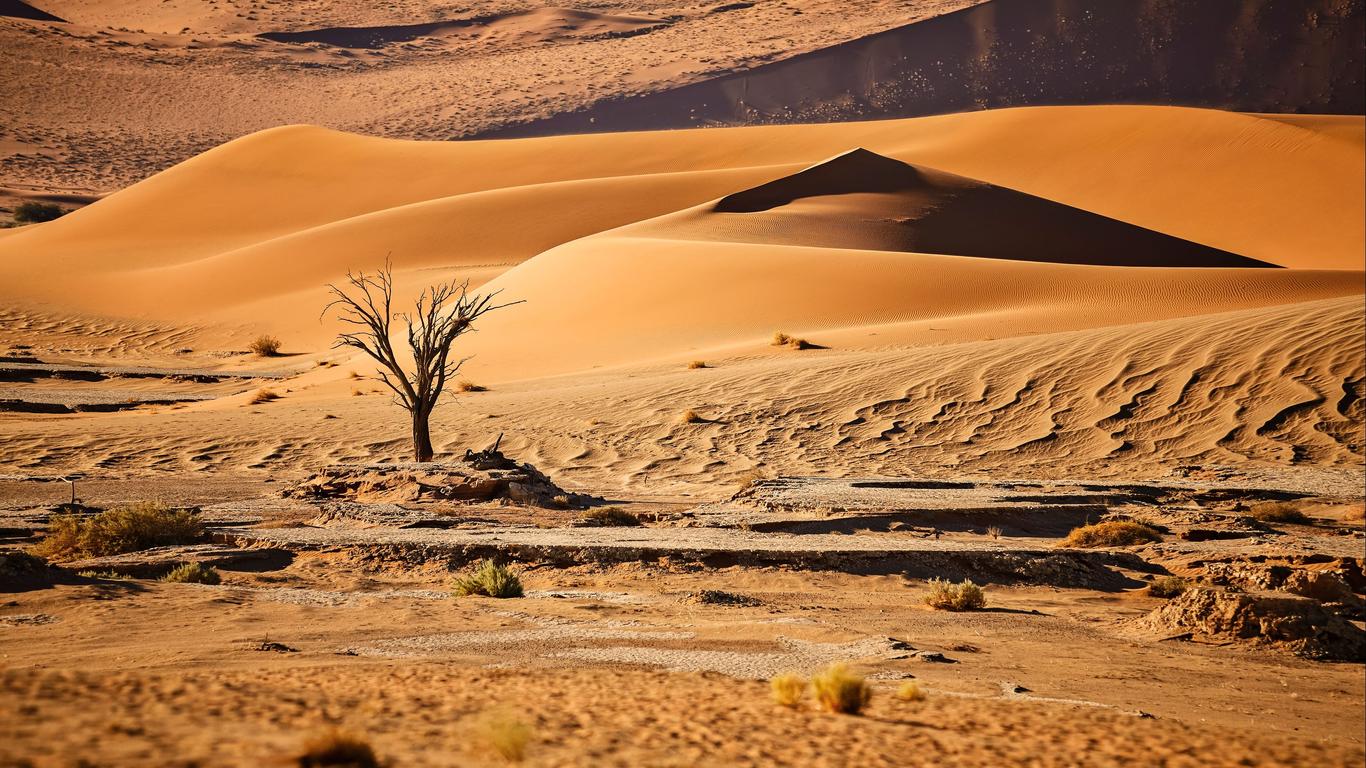
Namibia travel guide
Namibia Tourism | Namibia Guide
You're Going to Love Namibia
From deserts to national parks and exotic wildlife, Namibia offers wonderful experiences that can be enjoyed by travelers of all ages.
What to do in Namibia
1. Amaze at the Wildlife of Etosha National Park
This park is one of the best places to observe Namibian wildlife. All you need to do is find one of the waterholes in this white saline desert and observe all the creatures that it attracts, which might include rhinos and lions.
2. Climb Up Dune45
Dune45 is the highest dune in the Namib desert, standing at around 260 ft in height. The climb needs to be done early in the morning before the sand heats up and offers wonderful desert views once up there.
3. Explore Fish River Canyon
The second biggest canyon in the world is one of the most popular attractions in Namibia, and is best enjoyed at sunrise or sunset.
4. Visit the Colonial Town Luderitz
Going to Luderitz will feel like stepping into another dimension. Walking around this town is like being in a mini version of Germany with European architecture and restaurants serving sauerkraut and Weiss beer. While there, head to the ghost town of Kolmanskop to learn a bit of Namibian history.
5. See Pink Flamingos at Walvis Bay
Bird and nature lovers should not miss a trip to Walvis Bay, home to large colonies of pink flamingos, pelicans, as well as other bird species.
When to visit Namibia
Namibia enjoys over 300 days of sunshine every year and can be visited all year round; however, wildlife can be viewed better between the months of June and October.
How to Get to Namibia
Entry requirements
Citizens of around 50 countries including some African and European countries, Australia, New Zealand, Canada and the USA can enter Namibia without a visa for up to 90 days. For any other countries, citizens will need to apply for a visa prior to traveling.
Plane
The main international airport in Namibia is Hosea Kutako International Airport, and local airline Air Namibia operates nonstop flights to over 15 destinations, including Germany, South Africa, Zimbabwe and Botswana.
Car
Travel to Namibia by car is available from Angola through Oshikango or Ruacana, from Botswana through Buitepos or Mhembo, from Zambia through Wenela, and from South Africa through Araimsvlei, Verloorsdrift, Noordoewer or Oranjemund.
Bus
Direct bus services are available from Cape Town and Johannesburg in South Africa and from Victoria Falls in Zimbabwe with bus company Intercape Mainliner.
Popular airlines serving Namibia
Where to stay in Namibia
Hotels and hostels of various budgets can be found throughout the country. In more rural areas accommodation can be commonly found in the form of guesthouses and farms, while safari lodges are available in the national parks.
Where to stay in popular areas of Namibia
Most booked hotels in Namibia
How to Get Around Namibia
Public Transportation
While public buses are available in the cities, the main mode of local transport is shared taxis. These can be flagged on the main streets, and have a fixed price system, which depends on the final destination: if getting off along their regular route, expect to pay around 12 NAD (0.80 USD) per person, and double that amount if wanting to be dropped off directly at the accommodation.
Trains
StarLine trains are operated by TransNamib and travel all around Namibia, with a large number of lines going to and from the capital Windhoek. A tourist train, the Desert Express, provides luxury travel to some of the main tourist destinations.
Bus
StarLine buses are available for long distance bus travel, operated by TransNamib. They are air conditioned and travel throughout the country.
Car
Driving is a great way to explore the country, but make sure to read the rental agreement to understand any restrictions that might be in place if renting a car. Make sure to have some cash on hand on long trips to pay for gas, and while in more remote areas, it is wise to fill the car whenever possible.
Plane
Local flights are available with Air Namibia from Eros Airport in Windhoek to Rundu, Ondangwa and Katima Mulilo. Flights are also available from Hosea Kutako International Airport in Windhoek to Luderitz, Oranjemund and Walvis Bay.
The Cost of Living in Namibia
Eating out in Namibia will cost around 120 NAD (8 USD) for a cheap meal and about 250 NAD (17 USD) per person for a mid-range meal. Credit and debit cards are accepted in all major hotels and establishments; however, keep some cash on hand to pay in smaller shops and for some services, such as public transport.